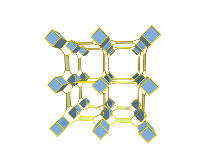Metal–organic frameworks(MOFs) and as a new class of porous materials, are promising candidates as electrodes for different energy storage applications, due to their unique properties like hybrid nature, high surface area, uniform porosity and chemical stability. Additionally, their tunability allows the integration of diverse functionalities such as redox centers in their structure using strategically predesigned organic linkers, with the targeted functionality. Unfortunately, there are many challenges that limit MOF performance as electrode materials as electrodes in energy storage application. These challenges include intrinsically poor conductivity, chemically instability in moisture, low pH media, and various electrolytes. Yet, the versatility of MOFs and the recent progress in researcher ability to change their linker chemistry, pore size, conductivity, and stability has opened a window of opportunity to further explore these fascinating materials as electrode materials.


